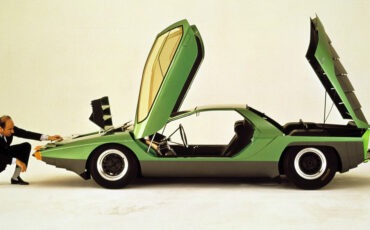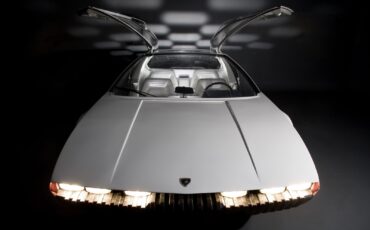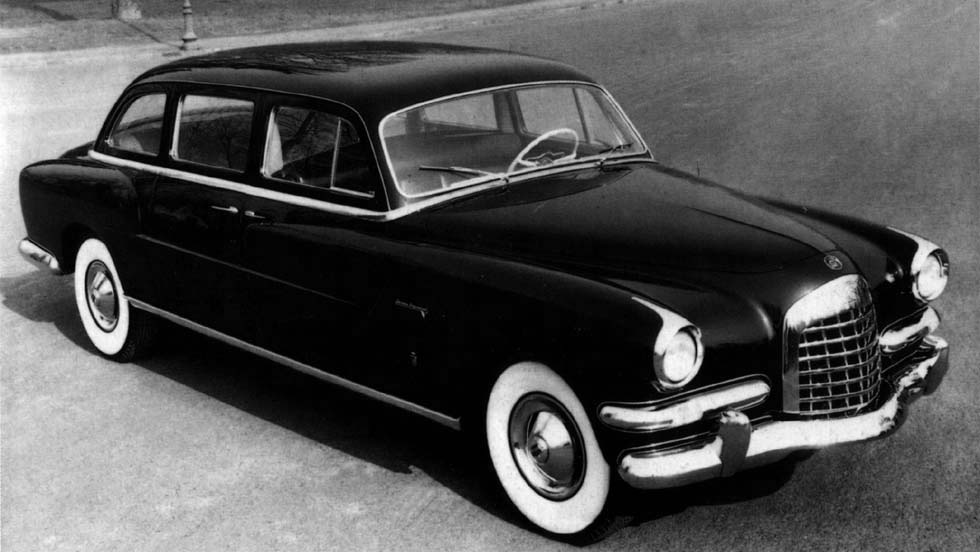
In its era, the Imperial, represented the pinnacle of luxury transportation. Its distinguished owners included the wealthy and socially elite, influential political figures, and those with a deep appreciation for fine craftsmanship. What many may not realize is that some of the last truly handcrafted cars in the classic tradition were produced through a collaboration between Chrysler Corporation and Carrozzeria Ghia of Italy in the 1950s and ’60s. Between 1957 and 1965, only 132 limousines were meticulously assembled, making the Ghia Crown Imperial one of the most exclusive automobiles in the world.
Chrysler’s Legacy in the Limousine Market
How did the Chrysler Imperial become one of the most exclusive and iconic automobiles? Chrysler had already established itself in the limousine market with long-wheelbase Imperials dating back to 1926. However, it wasn’t until 1940 that the first Chrysler Crown Imperial made its debut, boasting an impressive 145.5-inch wheelbase and a powerful 132-horsepower Straight 8 engine. Available in both eight-passenger sedan and luxurious limousine options, the Chrysler Crown Imperial maintained its signature wheelbase until 1954.
But what truly set the Chrysler Imperial apart were the groundbreaking innovations it introduced over the years. In 1949, Chrysler unveiled self-energizing disc brakes, followed by the legendary Hemi V-8 and full-time power steering in 1951. By 1953, the Chrysler Imperial was equipped with a fully automatic Powerflite transmission and a cutting-edge 12-volt electrical system. These engineering marvels, combined with its prestigious status, made the Chrysler Imperial a symbol of luxury and performance that remains highly coveted to this day.
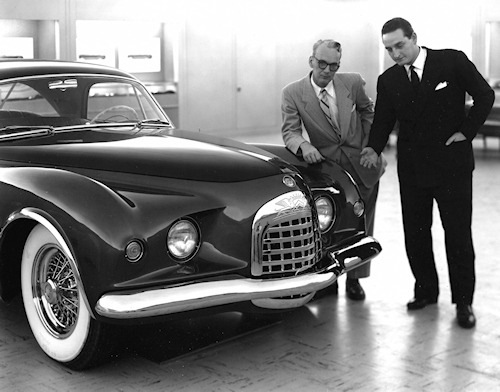
Between 1949 and 1954, Chrysler produced 662 eight-passenger sedans and 607 limousines on the Crown Imperial chassis. Additionally, 3,012 sedans and 233 limousines were built across various other Chrysler series, along with an unspecified number of long-wheelbase Dodge and DeSoto sedans.
By 1955, the Imperial line underwent a complete redesign and was officially registered as a separate marque. The new Crown Imperials featured elegant bodies crafted from stretched dies and rode on an extended 149.5-inch chassis. With this transition, Chrysler discontinued its other large sedans and limousines, leaving the Crown Imperial as its sole offering for the carriage, airport, and hotel limousine markets. The model carried into 1956 with only minor updates, and during these two years, 283 Crowns were built—mostly limousines, with just 85 sedans produced.
By 1956, Chrysler was re-evaluating its limousine program. Cadillac had come to dominate over 90% of the market, while other luxury automakers had largely exited the segment—Lincoln hadn’t produced limousines since 1942 (aside from a small batch of White House cars in 1950), and Packard’s last limo had rolled off the line in 1954. When Chrysler considered tooling up for a new limousine body for the upcoming 1957 Imperial K series, the costs proved daunting. A financial study conducted in May 1956 revealed that the specialized tooling required for the 1957–1959 Crown Imperial limousine would be so expensive that Chrysler would have to subsidize each car by several thousand dollars. With such a high cost for a limited production run, the company began exploring alternative solutions.
Ghia Enters the Picture
Rather than exiting the limousine market entirely and leaving it to Cadillac, Chrysler recognized that a limousine was essential to maintaining the prestige of the Imperial line. One alternative was outsourcing production—either domestically or abroad. Fortunately, Chrysler already had a strong working relationship with Ghia of Italy, which had previously built several Chrysler show cars and the Dual-Ghia sports car, a custom model developed with Chrysler’s unofficial support. After careful evaluation, Chrysler determined that Ghia could manufacture the limousine using meticulous handcrafting techniques, dramatically reducing tooling costs compared to an in-house production program.
Chrysler’s collaboration with Ghia had begun years earlier, driven by both financial strategy and a shared appreciation for Italian craftsmanship. In 1950, Chrysler was searching for a cost-effective partner to build its prototypes. Italy, benefiting from the Marshall Plan, offered skilled labor at competitive prices while maintaining exceptional quality standards. To identify the best fit, Chrysler arranged a competition between two prestigious Italian coachbuilders, Pinin Farina and Ghia, each tasked with constructing a prototype on a Chrysler and Plymouth chassis.
The rules were straightforward: both companies had to build the prototype as if it were a production-ready model, adhering to Chrysler’s blueprints. Two chassis were shipped to Turin, with the winner earning an ongoing partnership with the American automaker.
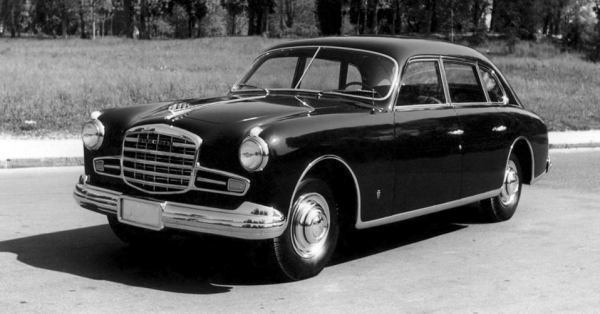
At Ghia, Mario Boano took a bold risk. Unimpressed with the original design, he requested permission to build the car his way. The result was a sleek, handcrafted body reminiscent of the Alfa Romeo 6C 2500, a design that had earned him the Gold Cup at the Stresa Concours in 1949. Chrysler’s team was deeply impressed—not just by the styling, but by the superior build quality. Ghia won the competition, solidifying its role as Chrysler’s go-to coachbuilding partner.
This partnership led to a series of elegantly crafted concept cars and, ultimately, the Crown Imperial limousines.
The Intricate Handcrafting Process
With a trusted partner in place, Chrysler’s design team—led by Virgil Exner and supported by Elwood Engel—began shaping the new Crown Imperial limousine. Chrysler placed an initial order for 25 vehicles to be built between November 1956 and May 1957. The model was offered exclusively as an eight-passenger limousine, featuring a partition behind the driver’s seat with an enclosed divider window and auxiliary jump seats.

The Ghia Crown Imperial retained a 149.5-inch wheelbase through its production run, with an overall length of 244.7 inches, a height of 58.5 inches, and a width of 80 inches. The styling, influenced by Chrysler’s 1957 Forward Look design philosophy, was developed by Exner alongside Cliff Voss and Bill Brownlie. A distinctive six-window roofline was crafted, with a black leather canopy over the rear section. For easier entry, “Hy-Bridge” doors extended into the roof. To achieve a graceful profile, the rear quarter panel from a two-door hardtop was repurposed—a remarkable design choice considering that a full-scale mockup of the limousine was never created. Instead, much of the surface stretching and shaping was accomplished through sketches and full-sized drawings. Charlie Walker, who had also contributed to the Imperial parade phaetons, translated these sketches into surface drafts. However, a mockup of the roof canopy was built to refine its design and alignment.
The project’s engineering team was led by Jack Charipar, with Dave Cohoe acting as the Ghia coordinator. Chrysler’s resident engineer in Turin was Paul Farago, a close associate of Exner and Ghia president Luigi Segré. Farago was not only an accomplished engineer but also a hands-on craftsman with a deep passion for special car projects. Before his work with Chrysler, he had built his own sports car for early Watkins Glen races and concours events. Later, he joined a leading imported car distributor in Detroit before becoming Ghia’s U.S. representative.
Although American by birth, Farago had Italian heritage and a strong connection with Ghia’s artisans. He played a crucial role in setting up the fabrication process, overseeing the construction of the jigs and fixtures required for limousine production. Additionally, he introduced special wooden egg crate frames, which were used to shape the limousine’s sheet metal components with precision.
Through this seamless collaboration between Chrysler’s visionary designers and Ghia’s master craftsmen, the Crown Imperial limousine became an exquisite blend of American innovation and Italian artistry—one of the most refined luxury automobiles of its time.
The construction of the Ghia Crown Imperial was a meticulous and highly skilled process, requiring an extraordinary level of craftsmanship. Ghia was responsible for building the entire vehicle, ensuring it was ready for delivery with only minor inspections and adjustments. Each car began as a 1957 Imperial two-door hardtop, built on a 129-inch convertible chassis chosen for its additional X-member reinforcement. The body was primed and assembled with sheet metal, trim, bumpers, and essential components before being shipped overseas. Upon arrival at Ghia’s workshop, the transformation began with precise modifications to the body and chassis.
The hardtop and frame were carefully cut apart and extended by 20.5 inches. This process required lengthening the frame, reinforcing structural elements, and installing an extended driveshaft, fuel lines, brake lines, and exhaust system. New floor panels and body sills were fabricated to accommodate the extension. The rear quarter panel was reshaped to integrate with the new roof and rear doors, while the rear lock pillars and interior quarter panels were constructed and installed.

Every aspect of the roofline was designed for both elegance and functionality. A six-window configuration was created, with a leather canopy over the rear compartment. Since the limousine’s doors extended into the roof, new door uppers were custom-made for both the front and rear. Air-conditioning ducts, windshield and belt moldings, and fine trim pieces were also crafted to fit precisely. Inside the car, no detail was overlooked. Door panels, the partition structure, armrests, and seats were carefully designed, hand-trimmed, and prepared for installation.
Ghia relied on old-world craftsmanship rather than large-scale industrial production. Instead of using mass-production dies, nearly every panel was shaped by hand over wooden egg crate mannequins using air hammers. The only hard tooling involved consisted of installation jigs, fixtures, and select flanging dies, all custom-built at Ghia’s facility.
Painting these limousines was an equally painstaking process. The entire body was metal-finished and meticulously sanded. No seams were visible, and door gaps were aligned with extreme precision. About 150 pounds of lead were used per car to ensure smooth, flawless surfaces. The paint process included multiple layers of fine lacquer in black, maroon, deep green, or deep blue. Each coat was carefully sanded before the final finish was polished to perfection using a special solution made from the internal structure of a cuttlefish, ensuring a flawless mirror-like shine. A hand-painted cream stripe replaced the standard rub rail along the body side, adding an elegant final touch.
Once the paint was complete, glass was installed, and the leather canopy was fitted over the rear compartment. Ornamentation combined elements from both the 1957 and 1958 model years, including a grille and various trim pieces, many of which required extensive hand-finishing. Every component had to be fitted precisely, as each car was crafted individually, ensuring an unparalleled level of quality.
The interiors were entirely hand-built at Ghia’s workshop. Five different interior trims were available for the rear compartment, each featuring unique seat patterns, door trims, and partition panels. With four exterior colors to choose from, buyers had 32 different combinations of exterior and interior styling. The finest broadcloth in grey or beige was used for passenger seating, complemented by plush sheared mouton carpeting sourced from a furrier. Glove-grade milled leather, handcrafted woodwork, and custom metal trim adorned the interior. The chauffeur’s compartment was finished in piped black leather with matching black nylon carpeting. Even the headlining materials were of the highest quality.

At any given time, 14 to 15 cars were in various stages of production, each taking about a month to complete, with at least two weeks dedicated solely to painting and finishing. Most cars were built to specific customer orders. Once assembly was complete, the limousines underwent rigorous road testing. With 40 psi of air in the tires, each car was driven hard over cobblestone streets to detect and eliminate any rattles. Any necessary adjustments were made before shipment.
To protect these handcrafted vehicles, Ghia initially crated each limousine in high-quality wooden boxes for transport. In one instance, desert bandits intercepted a shipment destined for an Arabian sheik, uncrated the car, and stole only the box, leaving the limousine untouched. Eventually, the cost of these crates proved too high, and the practice was discontinued.
The completed limousines were transported by truck to Genoa for shipment overseas. The journey over Italy’s winding, narrow roads was treacherous until Fiat constructed a private highway for its own export operations. This road was open to the public on weekends, but during the week, manufacturers like Ghia had to pay Fiat for access. Despite the challenges, the effort put into each Ghia-built Imperial ensured that these limousines stood as a true symbol of prestige and craftsmanship.
Challenges in creating the Ghia Crown Imperial Limousines
Despite every effort to produce a flawless limousine, some of the earliest Ghia Crown Imperials faced challenges that needed to be addressed. One of the first issues was the vehicle’s weight, which put excessive strain on the tires. This was resolved by adjusting the tire specifications. Additional refinements were also necessary for the rear wheel bearings and driveshaft to accommodate the limousine’s increased weight and size. Another mechanical issue arose with the electric glass partition between the chauffeur and passenger compartments. The standard motor was too weak to lift the heavy glass, so it was replaced with a wagon tailgate motor, which provided the necessary strength. The driver’s seat was also non-adjustable, presenting a problem for chauffeurs of varying heights. In at least one case, the seat had to be modified to accommodate an especially tall driver.
The most persistent issue involved the electrical wiring. Italian engineers were unfamiliar with the extensive electrical systems found in American luxury vehicles. The Crown Imperial featured dual air conditioners, power windows, dual radios with rear-seat controls, and other high-end amenities, all of which required significant coordination between teams in the U.S. and Italy to ensure proper functionality.
Once completed, the limousines were shipped to New York, where they cleared U.S. Customs before being transported to Detroit for final road testing and inspection. After passing these checks, the vehicles were typically returned to Chrysler Manhattan for delivery to customers. Later, both final inspection and delivery were consolidated in New York to streamline the process. From the initial customer order to final delivery, the entire process, including overseas shipping, took approximately six months.

The Ghia Crown Imperial was an ultra-exclusive luxury limousine, retailing for over $12,000, a significant sum at the time. Most buyers were prominent figures in politics, business, and royalty. Among the notable owners were King Saud of Saudi Arabia, who ordered a special bulletproof version, the rulers of Kuwait and Qatar, David Sarnoff, CEO of RCA, author Pearl S. Buck, Mrs. Anna Dodge, Dominican dictator Rafael Trujillo, New York Governor Nelson Rockefeller, and the White House. One limousine was even converted into a bubble-top model for Queen Elizabeth II and Prince Philip, used during their 1959 Royal Tour of Canada. To improve visibility for onlookers, the right-hand rear seat was raised by three to four inches.
Building a car across two continents presented logistical complexities. Preparing the kit car for shipment was no simple task, requiring careful organization to ensure that every necessary part was included. Since the two-door hardtop body had to accommodate shorter sedan doors, securing everything for transport was a challenge. The interior and trunk had to be packed tightly with just the right number of miscellaneous parts and sheet metal components. Since each car was shipped with fuel, flammable paint, and trim materials, maritime fire regulations required them to be transported on the ship’s upper decks rather than in the hold.
Customs regulations posed another hurdle. A “content added” tax had to be paid on all work done and parts fabricated at Ghia, which meant U.S. Customs had to be satisfied as to what exactly was completed in the United States and what was done in Italy. This required cars to be inspected both upon departure and again upon arrival in New York. Parts shortages occasionally created additional challenges, requiring missing components to be located, packed, and shipped, sometimes by air. Each of these shipments had to go through Customs again, adding further complications. Ghia also required periodic payments, which meant letters of credit and bank drafts had to be prepared and forwarded.

Difficulties in communication further complicated matters. Any technical drawings received from Ghia were, of course, done by Italian engineers, and there were differences in terminology. A “spare tire,” for example, was translated as a “spared tire” in English. Eventually, a former Ghia engineer joined the Chrysler staff in Detroit to act as an interpreter, but until then, Italian-English dictionaries saw heavy use.
All styling and engineering work on the Ghia Crowns was done in addition to Chrysler’s normal production models, making them exceptions to the system. The cars required almost as much attention as regular production programs, and every aspect of their construction had to be carefully scheduled. Timing was often a challenge, with last-minute adjustments and refinements necessary at various stages.
In light of these difficulties, Chrysler again considered finding a domestic bodybuilder. In 1959, two American companies were contacted, and a few prototypes were constructed. However, Chrysler management felt that the quality of these cars did not match the craftsmanship of the Ghia-built limousines. As a result, the partnership with Ghia continued.
The Decline of the Chrysler Imperial
In 1960, the Crown Imperial underwent a restyling to match the updated look of the Imperial line. The base kit was now modified from a two-door hardtop to a four-door sedan, built over a convertible frame. This adjustment simplified assembly, as the sedan doors and center pillars were already in place, though additional modifications were needed for the rear quarter panels. Given that most of the limousines from 1957 to 1959 were ordered in black, Chrysler made it the standard color for the new models, with other colors available only by special order. The interior options were streamlined to the two most popular colors, grey and beige. With rising costs at Ghia and the addition of new features like the Autopilot system, the price of the limousines increased to $16,500.
In 1960, 16 cars were sold, followed by nine more in 1961, all featuring the updated styling. The program was paused in 1962 but revived in 1963 with 13 new cars—12 limousines and one sedan. The base model was again a four-door hardtop, available only in black with a single interior option. The price had risen further to $18,500. The experience gained from working on the limousines also contributed to the development of the Chrysler turbine cars, marking a significant crossover of expertise.
By 1964, the Imperial line underwent another redesign under the direction of Elwood Engel. An additional 20 limousines were built, some updated to 1965 specifications with a new grille. The 1965 models introduced a special 4-window “Landau” version at no extra charge, alongside the familiar 6-window “Town” limousine.

However, by 1965, Chrysler decided to part ways with Ghia for several reasons. The rising costs of production had pushed the price of the limousines to $18,500, and Ghia was asking for a larger commitment to lower costs. The passing of Ghia president Luigi Segré in 1963 ended a close partnership between Chrysler and the company, and with the upcoming 1967 Imperial being a unit-bodied car with no separate frame, Ghia faced new challenges in adapting their methods. These factors, combined with the logistical hurdles of coordinating production across two continents, led to the end of the Ghia limousine program.
In the aftermath, Chrysler shipped the tooling for the limousines to Barreiros in Spain, where an additional 10 cars were built using 1966 specifications. However, these cars were never sold in the U.S. and most were sold in Europe. Some of them are said to still be in private collections, including a rumored car in the possession of Francisco Franco.
Originally, Chrysler had planned to build 500 limousines annually starting in 1967, but this program was cancelled. Instead, the company turned to Stageway Coaches of Fort Smith, Arkansas, which had experience building long-wheelbase airport limousines. From 1967 to 1968, Stageway produced 12 LeBaron Limousines, which featured a longer 163-inch wheelbase and a modified design, including an extra panel and window between the front and rear doors. These new limousines were priced between $12,000 and $15,000.
In the years that followed, additional limousines were built by Stageway, but the program eventually fizzled out by the early 1970s. As Chrysler moved on to new designs, the limousines became less of a priority, and by 1975, the Imperial name was retired from the lineup. With it, the iconic era of the Ghia-built Crown Imperial limousines came to a close.
Although these magnificent vehicles are no longer in production, their legacy lives on as symbols of luxury, craftsmanship, and innovation, marking a golden age in American automotive history.







